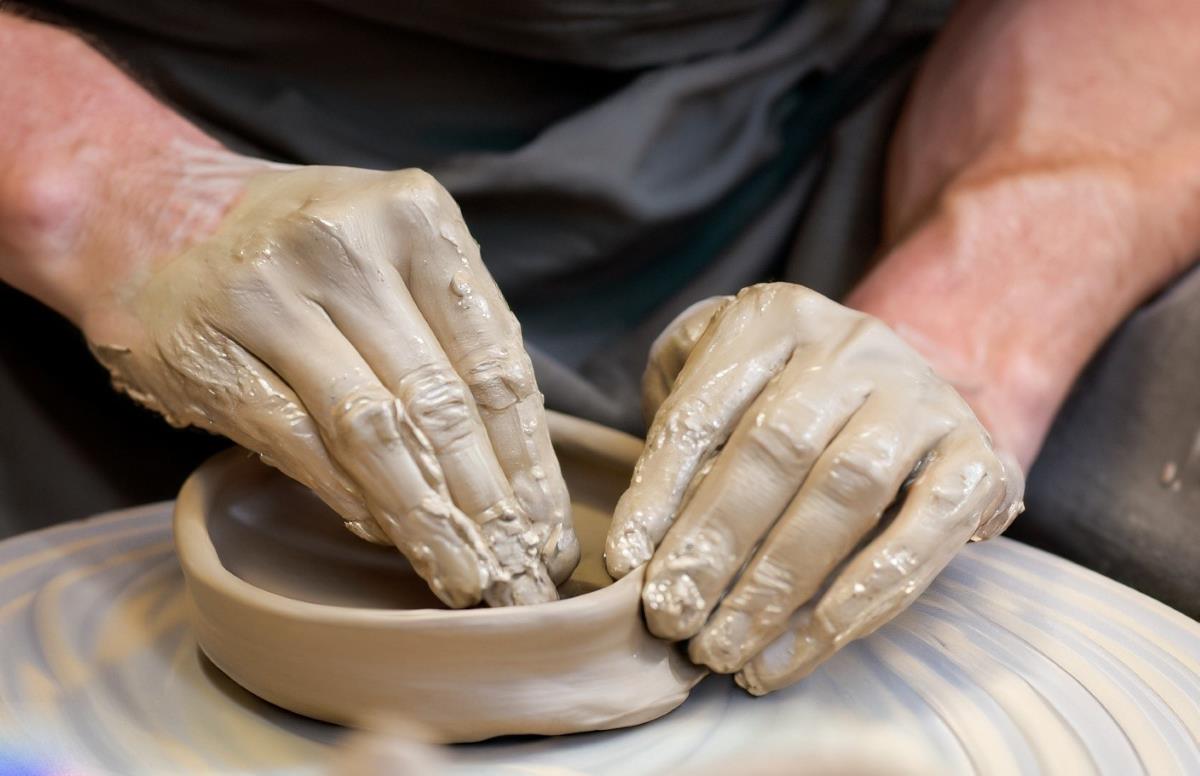Have you ever wondered about the vibrant traditions of Mexican pottery? From its rich history to its unique craftsmanship, Mexican pottery is steeped in culture and beauty. In this article, we’ll delve into the world of Mexican pottery and explore the techniques, symbolism, and cultural significance behind this ancient art form.
When you think of Mexico, what comes to mind? Perhaps it’s the sandy beaches or the flavorful cuisine. But Mexico has so much more to offer, especially when it comes to art and culture. Mexican pottery is known for its intricate designs and vibrant colors, making it a true visual delight. Each piece tells a story, reflecting the rich cultural heritage of the country.
Mexican pottery has a long and fascinating history, dating back thousands of years to the time of the ancient Mayans and Aztecs. These civilizations were master artisans, creating pottery for everyday use as well as for ceremonial purposes. Today, the tradition of Mexican pottery lives on, with skilled artisans carrying on the techniques and styles of their ancestors.
In our next article, we’ll take a closer look at the different types of Mexican pottery, from the famous talavera ceramics of Puebla to the intricate black pottery of Oaxaca. We’ll explore the symbolism behind the designs and colors, and learn about the techniques used to create these magnificent pieces. So stay tuned to discover the vibrant traditions of Mexican pottery!
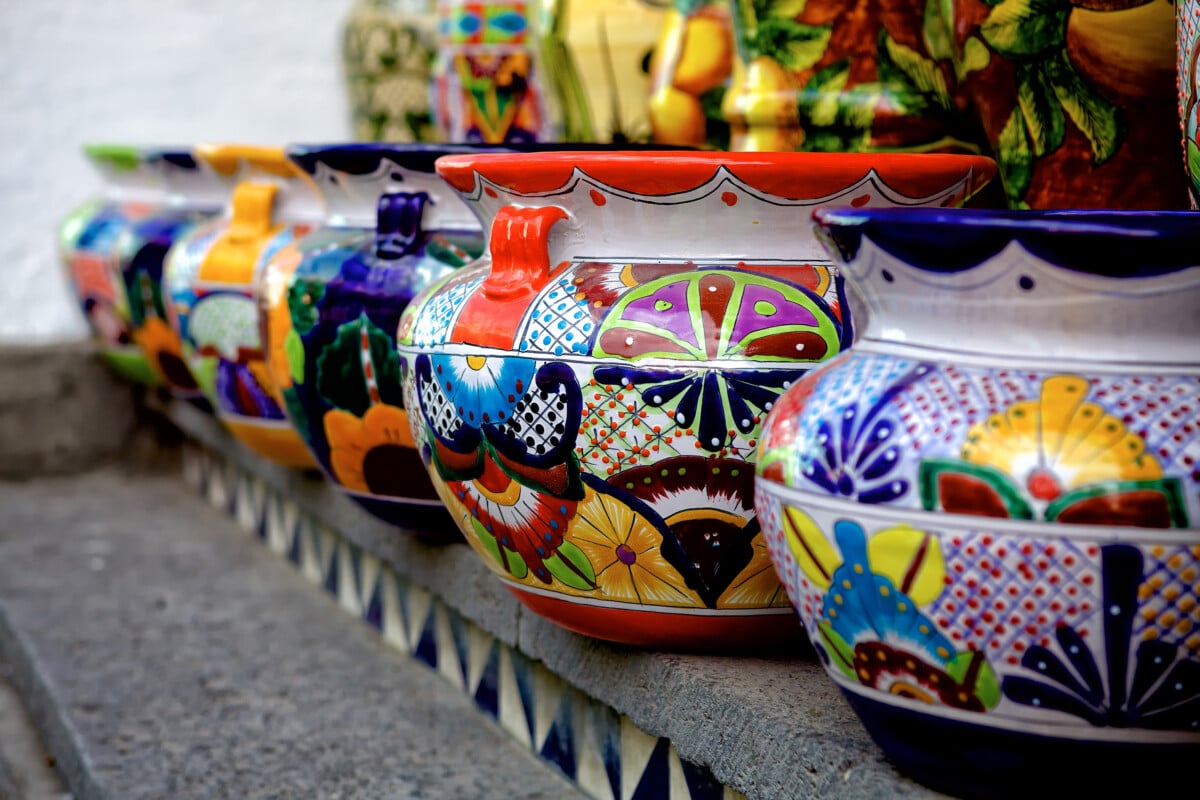
History of Mexican Pottery
Mexican pottery has a rich and vibrant history that dates back thousands of years to the Pre-Columbian era. The indigenous peoples of Mesoamerica, including the Maya, Aztecs, and Zapotecs, were skilled artisans who created pottery for both practical and ceremonial purposes.
Pre-Columbian Era
During the Pre-Columbian era, Mexican pottery played a significant role in the daily lives of indigenous communities. It was used for cooking, storing food and water, as well as for religious and ritualistic practices. The pottery was often decorated with intricate patterns and symbols, depicting mythological creatures and deities.
One of the most iconic styles of Pre-Columbian pottery is the Mayan pottery, which is characterized by its elegant shapes and intricate designs. The Mayans used a variety of techniques, including hand-building and wheel-throwing, to create their pottery.
Spanish Influence
With the arrival of the Spanish conquistadors in the 16th century, Mexican pottery underwent a significant transformation. The Spanish introduced new techniques, such as glazing and firing at higher temperatures, which gave the pottery a distinct European influence.
The introduction of Spanish pottery traditions, such as talavera pottery from Spain, had a lasting impact on Mexican pottery. Talavera pottery is known for its vibrant colors and elaborate designs, which were adopted by Mexican artisans.
Independence and Revolution
The Mexican War of Independence in the early 19th century and the Mexican Revolution in the early 20th century had a profound impact on Mexican pottery. During these turbulent times, traditional pottery production declined as people focused on more pressing matters.
However, the Mexican Revolution also sparked a renewed interest in indigenous culture and traditions. Many artisans sought to revive traditional pottery techniques and designs, leading to a resurgence in the production of Mexican pottery.
Modern Revival
In recent decades, Mexican pottery has experienced a renaissance, with a renewed appreciation for its craftsmanship and cultural significance. Artisans across the country are preserving and revitalizing traditional techniques, while also incorporating contemporary elements into their designs.
The modern revival of Mexican pottery has been supported by government and non-profit initiatives, as well as a growing interest from tourists and collectors. Today, Mexican pottery is not only a vibrant art form but also an integral part of the country’s cultural heritage.
Different Styles of Mexican Pottery
Mexican pottery encompasses a wide range of styles, each with its own unique characteristics and regional influences. Here are some of the most prominent styles of Mexican pottery:
Talavera Pottery
Talavera pottery, originally from Spain, has become synonymous with Mexican ceramics. It is characterized by its vibrant colors and intricate hand-painted designs. Talavera pottery is produced mainly in the city of Puebla, where it has been designated as a protected craft.
Barro Negro Pottery
Barro Negro pottery, from the town of San Bartolo Coyotepec in Oaxaca, is known for its distinctive black color. The pottery is made from a special clay that turns black when fired and is often decorated with traditional Zapotec designs.
Mata Ortiz Pottery
Mata Ortiz pottery, named after the village in Chihuahua where it originated, is a relatively new style that has gained international recognition. Inspired by ancient Paquimé pottery, Mata Ortiz artisans use a combination of traditional and modern techniques to create intricate and finely detailed pieces.
Tree of Life Pottery
The Tree of Life pottery, from the state of Puebla, is a unique and symbolic art form. These clay sculptures depict scenes from Mexican folklore and often feature intricate depictions of animals, plants, and religious symbols. The pottery is typically decorated with bright, vibrant colors.
Oaxacan Black Clay Pottery
Oaxacan Black Clay pottery, also known as barro negro, is a traditional style of pottery from the state of Oaxaca. It is characterized by its smooth, shiny black surface and delicate, intricate designs. The pottery is often used to create decorative and functional pieces, such as vases, bowls, and figurines.

Materials and Techniques Used
Mexican pottery is typically made from clay and terracotta, which are abundant in the country. Artisans use a variety of techniques to shape and decorate the clay, including hand-building and wheel-throwing.
Clay and Terracotta
Clay is the primary material used in Mexican pottery. Different regions in Mexico have distinct clay compositions, which can vary in color and texture. Terra-cotta, a type of clay, is also commonly used for pottery in Mexico.
Glazes and Paints
Glazes and paints are used to decorate and add color to Mexican pottery. Talavera pottery, for example, is known for its vibrant, hand-painted designs. Artisans use natural pigments or mineral-based paints to achieve the desired colors and patterns.
Hand-building Techniques
Hand-building techniques, such as coiling and slab construction, are commonly used in Mexican pottery. Coiling involves creating long, even coils of clay and layering them to build up the walls of the pottery. Slab construction involves rolling out clay into flat sheets and shaping them into forms.
Potter’s Wheel
The potter’s wheel is also used in Mexican pottery production, especially for creating symmetrical and uniform pieces. Artisans use the wheel to shape the clay and refine the form of the pottery.
Firing and Kilns
Firing is the process of heating the pottery in a kiln to harden it and make it durable. Different firing techniques, such as low firing and high firing, are used depending on the type of pottery and the desired result. Kilns can be traditional wood-fired kilns or modern gas or electric kilns.
Symbolism and Meaning in Mexican Pottery
Mexican pottery is often rich in symbolism and carries deep cultural meaning. From religious and mythological symbols to regional influences and sacred animals, here are some examples of the symbolism and meaning in Mexican pottery:
Religious and Mythological Symbols
Many Mexican pottery designs are inspired by religious and mythological beliefs. The use of Christian symbols, such as crosses and angels, reflects the influence of Catholicism in Mexico. Pre-Columbian designs often depict gods and goddesses from ancient Mesoamerican cultures.
Cultural and Folklore Symbols
Mexican pottery often incorporates cultural symbols and imagery from folklore traditions. These symbols may be associated with specific regions, such as the Day of the Dead skulls in Oaxacan pottery, or with broader Mexican cultural heritage, such as the use of vibrant colors and patterns.
Regional Influences
Different regions in Mexico have distinct styles and symbols associated with their pottery. For example, Talavera pottery from Puebla often features Islamic and Spanish Moorish influences, while Oaxacan black clay pottery reflects the Zapotec and Mixtec cultures of the region.
Sacred Animals and Nature
Animals hold significant symbolism in Mexican pottery. The eagle, snake, and jaguar are often depicted, representing power, wisdom, and protection. Nature motifs, such as flowers and plants, are also common, symbolizing fertility, growth, and natural beauty.
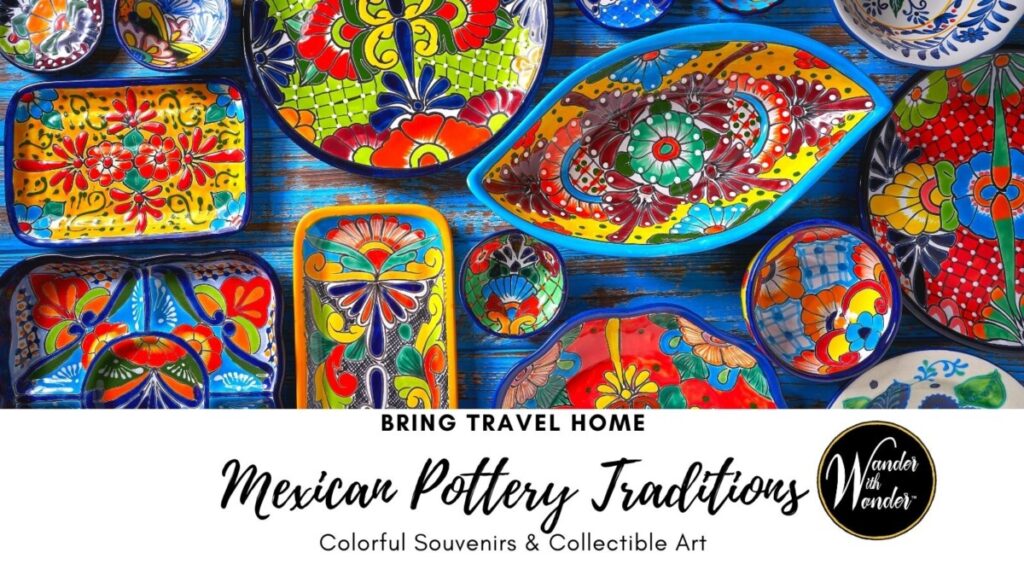
Traditional Uses and Functions of Pottery
Mexican pottery has been used for various purposes throughout history. From ceremonial and ritual objects to household utensils and decorative pieces, here are some traditional uses and functions of pottery in Mexico:
Ceremonial and Ritual Objects
Pottery played a vital role in religious and ceremonial practices in indigenous cultures. Ritual vessels, incense burners, and figurines were used in religious ceremonies, representing offerings to the gods and spirits.
Household Utensils and Cookware
Pottery has long been used as practical household items in Mexico. Clay pots, bowls, and pitchers were used for cooking, storing food and water, and serving meals. The clay material helps retain heat, making it ideal for traditional Mexican cuisines, such as mole and tamales.
Decorative and Ornamental Pieces
Mexican pottery is renowned for its decorative value. Intricately painted and sculpted pieces are used to adorn homes and special occasions, adding a touch of cultural beauty to the surroundings. These decorative pieces can include vases, plates, figurines, and wall hangings.
Architectural Elements
Mexican pottery has also been incorporated into architecture, adding a unique touch to buildings. Ceramic tiles, often hand-painted in intricate designs, can be found on the facades of houses, churches, and public buildings, particularly in the colonial towns of Mexico.
Famous Mexican Pottery Artisans
Throughout history, Mexico has been home to many renowned pottery artisans who have contributed to the country’s rich pottery heritage. Here are some notable Mexican pottery artisans and their respective styles:
The Talavera Families
Talavera pottery has been produced by several prominent families in the city of Puebla for generations. The Uriarte, Castillo, and Talavera de la Reina families are among the most famous practitioners of this traditional style. Their workshops continue to produce exquisite Talavera pottery today.
The Black Clay Masters
San Bartolo Coyotepec, in the state of Oaxaca, is known for its barro negro pottery. The Alvarez family, including renowned artist Doña Rosa, played a pivotal role in reviving and promoting this unique style of pottery. Their work has gained international recognition for its fine craftsmanship.
The Mata Ortiz Innovators
The village of Mata Ortiz in Chihuahua became famous for its pottery due to the work of Juan Quezada and his family. Quezada discovered ancient pottery techniques in the 1970s and revitalized the tradition in his community. His innovative approach and intricate designs have inspired a new generation of Mata Ortiz artisans.
The Tree of Life Artists
The Castillo family from Izúcar de Matamoros in Puebla is renowned for creating exceptional Tree of Life pottery. The family has been making these clay sculptures for generations, depicting scenes from Mexican folklore and mythology. Their stunning creations have become highly sought after by collectors.
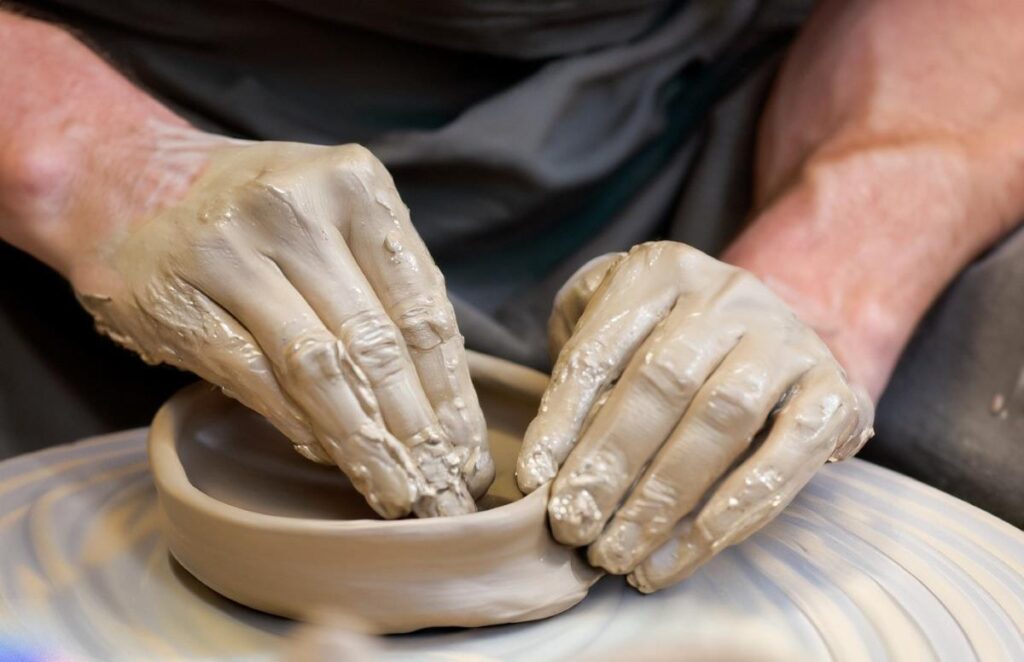
Impact and Influence of Mexican Pottery
Mexican pottery has had a significant impact on the cultural, economic, and artistic landscape of Mexico. Here are some ways in which Mexican pottery has influenced and shaped the country’s heritage:
Economic Development
The production of Mexican pottery has provided a source of income and economic development for many communities. Artisans and pottery workshops contribute to local economies, attracting tourists and collectors and supporting livelihoods.
Preservation of Cultural Heritage
The revival and preservation of traditional pottery techniques have helped protect and promote Mexico’s cultural heritage. By passing down knowledge and skills from one generation to the next, artisans ensure that the art of Mexican pottery continues to thrive.
Inspiration for Contemporary Artists
Mexican pottery has inspired contemporary artists and designers worldwide. Its vibrant colors, intricate designs, and symbolic motifs have influenced various art forms, including ceramics, sculpture, and fashion.
Artisan Communities and Cooperatives
Pottery production has fostered the development of artisan communities and cooperatives in Mexico. These communities provide support, resources, and training to talented artisans, helping them grow and reach wider markets.
Marketing and Export of Mexican Pottery
Mexican pottery is marketed and sold through various channels, both domestically and internationally. From local markets and craft fairs to online platforms and international trade, here are some avenues for marketing and exporting Mexican pottery:
Local Markets and Street Vendors
In Mexico, local markets and street vendors play a vital role in selling pottery to both locals and tourists. These marketplaces offer a wide variety of pottery styles and prices, providing opportunities for both established and emerging artisans to showcase their work.
Art Galleries and Craft Fairs
Art galleries and craft fairs provide a platform for artists to exhibit and sell their pottery to a more discerning audience. These venues attract collectors, art enthusiasts, and tourists interested in acquiring unique and high-quality pottery pieces.
Online Platforms and E-commerce
With the rise of the internet and e-commerce, artisans can now sell their pottery directly to customers worldwide. Online platforms, such as Etsy and Amazon Handmade, have made it easier for artisans to showcase their work, connect with buyers, and facilitate international shipping.
International Trade and Export
Mexican pottery is exported to countries around the world, contributing to the country’s economy and cultural exchange. Importers and distributors work with Mexican artisans and workshops to export pottery to international markets, including the United States, Europe, and Asia.
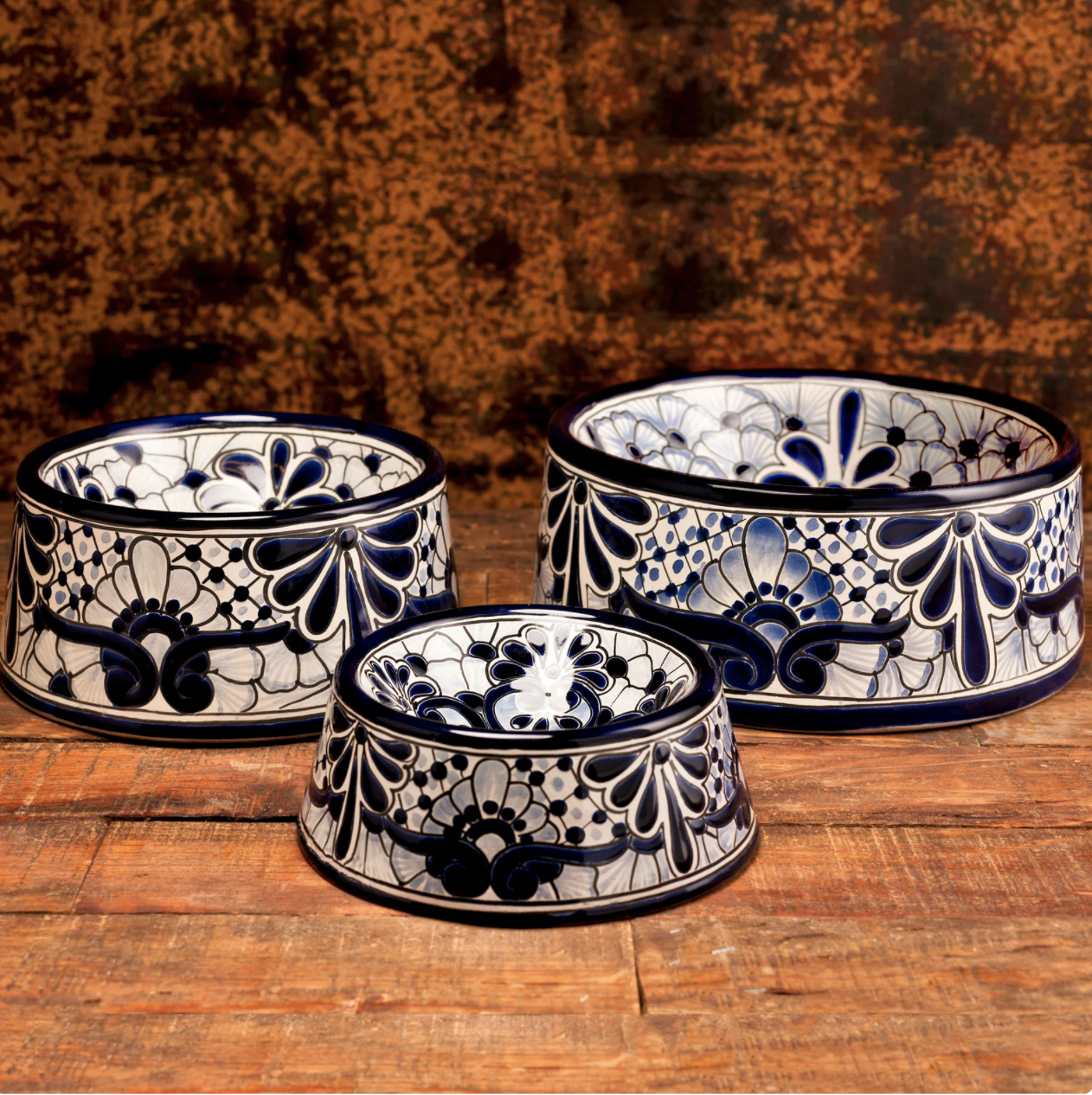
Challenges and Threats to Mexican Pottery
Despite its rich history and cultural significance, Mexican pottery faces several challenges and threats that can impact its sustainability and preservation. Here are some of the challenges faced by Mexican pottery:
Competition from Mass-produced Imports
Mass-produced pottery from countries with lower production costs and standardized designs poses a challenge to Mexican artisans. Cheap imitations flooding the market can devalue authentic Mexican pottery and affect the livelihoods of traditional artisans.
Loss of Traditional Techniques
The knowledge and skills required for traditional pottery techniques are at risk of being lost. As younger generations pursue alternative careers and lifestyles, there is a need to promote and preserve these traditional techniques through education and apprenticeship programs.
Protection of Intellectual Property
The unique designs and styles of Mexican pottery are susceptible to intellectual property infringement. Copying and reproducing traditional designs without proper recognition or permission undermines the heritage of Mexican pottery and the livelihoods of artisans.
Sustainability and Environmental Impact
Pottery production can have an environmental impact, particularly when improper waste disposal and extraction practices are employed. It is crucial to promote sustainable practices and responsible sourcing of materials to minimize the ecological footprint of Mexican pottery.
Promoting and Supporting Mexican Pottery
To ensure the continued vitality and appreciation of Mexican pottery, various initiatives and practices are in place to promote and support artisans. Here are some ways in which Mexican pottery is being promoted and supported:
Government and Non-profit Initiatives
Government agencies and non-profit organizations play a significant role in supporting and promoting Mexican pottery. They provide funding, training, and resources to help artisans develop their skills, market their pottery, and preserve traditional techniques.
Education and Training Programs
Education and training programs are essential for preserving and passing down traditional pottery techniques. Schools, workshops, and cultural centers offer classes and apprenticeships to nurture young talent and keep the art of Mexican pottery alive.
Tourism and Cultural Experiences
Tourism plays a crucial role in promoting and sustaining Mexican pottery. Tourists visiting pottery centers and workshops not only support local economies but also gain a deeper understanding of the art form by interacting with artisans and witnessing the creative process.
Fair Trade and Ethical Practices
Fair trade initiatives and ethical practices ensure that artisans receive fair compensation for their work and that the production of Mexican pottery is environmentally sustainable. Certifications and labels, such as the Fair Trade mark, help consumers identify and support ethical pottery producers.
Appreciating Mexican Pottery as Art
Mexican pottery is not only a functional craft but also a form of art that holds aesthetic and cultural value. Here are some reasons to appreciate Mexican pottery as art:
Aesthetics and Visual Appeal
Mexican pottery is characterized by its vibrant colors, intricate patterns, and unique shapes. The combination of skilled craftsmanship and creative design results in visually stunning pieces that are worthy of admiration.
Craftsmanship and Skill
The creation of Mexican pottery requires immense skill and expertise. From shaping the clay to mastering painting and glazing techniques, artisans invest years of practice and dedication to develop their craft.
Historical and Cultural Significance
Mexican pottery is deeply rooted in the country’s history and cultural heritage. Each pottery style carries with it stories, traditions, and symbols that reflect the diverse cultures and communities of Mexico.
Collecting and Investing in Pottery
Mexican pottery is not only an artistic and cultural treasure but also a valuable investment. Collectors worldwide recognize the uniqueness and historical significance of Mexican pottery, making it a sought-after art form.
Visiting Pottery Centers in Mexico
To truly appreciate and experience the vibrant traditions of Mexican pottery, visiting pottery centers in Mexico is highly recommended. Here are some notable pottery centers worth exploring:
Puebla and Talavera Workshops
Puebla is the birthplace of Talavera pottery, and it is the ideal destination to witness the intricate processes involved in its production. Exploring the city’s Talavera workshops and visiting the Museo Amparo provides a comprehensive understanding of the history and artistry behind Talavera pottery.
Oaxaca and Zapotec Craftsmen
The state of Oaxaca is renowned for its diverse pottery styles, including the black clay pottery of San Bartolo Coyotepec. Visiting the workshops of Zapotec potters in Oaxaca City and surrounding villages offers a unique opportunity to witness the creative process behind these exquisite pieces.
San Bartolo Coyotepec and Black Clay
San Bartolo Coyotepec is a small town in Oaxaca that specializes in the production of black clay pottery. Visiting the local pottery workshops allows visitors to witness the unique firing process that transforms the clay into its iconic glossy black finish.
Chihuahua and the Mata Ortiz Village
Located in the state of Chihuahua, Mata Ortiz is a small village that has gained international recognition for its pottery. Visitors can explore the village and witness the innovation and creativity of Mata Ortiz artisans, as well as purchase unique and contemporary pieces directly from the artists.
Preserving Mexican Pottery for Future Generations
Preserving Mexican pottery for future generations requires collective efforts from various stakeholders. Here are some measures for ensuring the longevity of Mexican pottery:
Documentation and Research
Documenting and researching Mexican pottery traditions is essential for understanding its history and cultural significance. Through academic studies and fieldwork, valuable insights can be gained and shared with future generations.
Museum and Gallery Exhibitions
Museum and gallery exhibitions provide a platform for showcasing Mexican pottery as a fine art form. These exhibitions not only educate visitors but also inspire future generations to appreciate and continue the tradition of Mexican pottery.
Artisan Mentorship and Apprenticeships
Passing down traditional pottery techniques through mentorship and apprenticeship programs is crucial for maintaining the art form. Experienced artisans can share their knowledge and skills with younger generations, ensuring the continuity of Mexican pottery.
Cultural Tourism and Sustainable Development
Cultural tourism can provide economic opportunities for pottery-producing communities while also encouraging the preservation of traditional practices. Encouraging sustainable tourism practices can ensure that communities benefit from tourism without compromising their heritage.
Conclusion
Mexican pottery is a testament to the country’s rich cultural heritage and artistic traditions. From the ancient civilizations of Mesoamerica to the modern revival of traditional techniques, Mexican pottery continues to captivate and inspire. By appreciating and supporting Mexican pottery, we can contribute to its preservation for future generations to discover and cherish. Through our collective efforts, we can ensure that the vibrant traditions of Mexican pottery endure for years to come.
